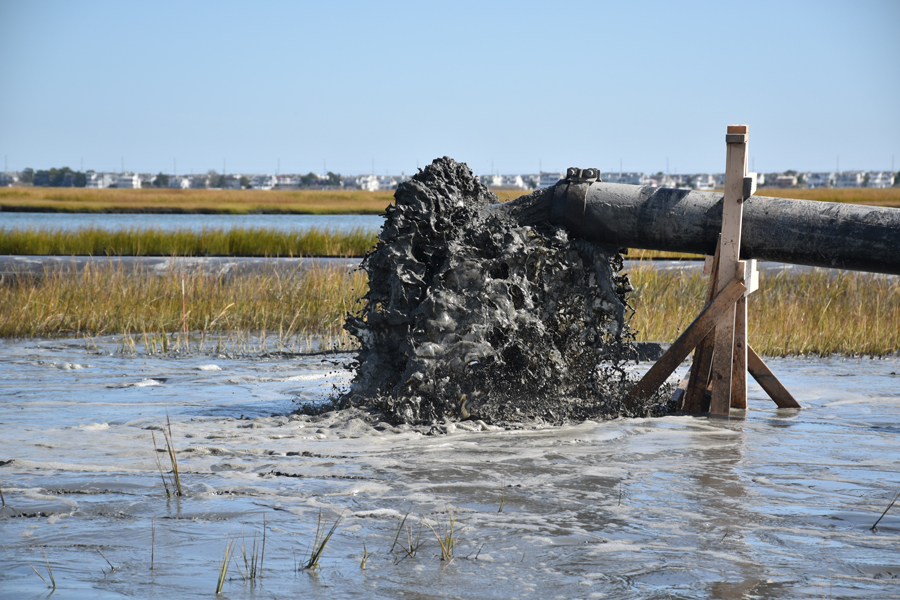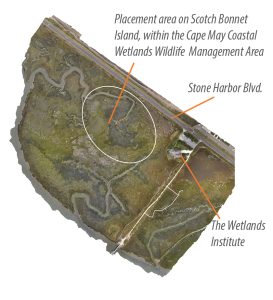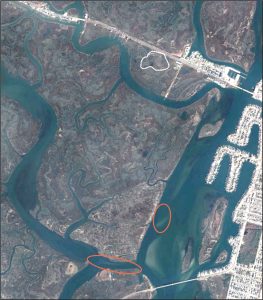by Dr. Lenore Tedesco, Executive Director
Salt marshes are an essential component of coastal ecosystems, performing services that benefit both wildlife and people. They are among the most diverse habitats on Earth, rivaling coral reefs and tropical rain forests. They provide essential food, refuge, and nursery habitat for more than 75% of fish and shellfish and foraging habitat for a variety of birds. Salt marshes remove carbon from the atmosphere and store it below ground, helping to reduce the impacts of climate change. There is also a lot of research that shows they absorb wave energy and reduce storm damage, protecting our coastal communities. A recent study showed that the back bay marshes of Ocean City reduce flood damages by 15% annually. We all also know they are majestic, calming, and beautiful.
With the documented loss of marshes right at the Institute (see Views From the Tower summer 2024 for info), we are taking action. Beginning in early October, the partnership of the U.S. Army Corps of Engineers (Philadelphia District), NJDEP, and The Wetlands Institute are initiating a beneficial use of dredged material project. Clean dredged sediment from the NJ Intracoastal Waterway will be used to increase the elevation of low marsh areas that have fallen 2 to 3 feet below the ranges for healthy marsh. The goal is to reestablish suitable levels of tidal flooding and allow the marsh to flourish for decades to come, potentially offsetting sea level rise by more than 100 years.
Dredging will be in the vicinity of Nummy Island. A sand and mud slurry will be pumped though a floating pipeline and spread onto a section of marsh managed by NJDEP as part of the Cape May Coastal Wetlands Wildlife Management Area, just south of Stone Harbor Boulevard and adjacent to TWI. This placement will smother the existing marsh grasses, but the new surface is designed to be at appropriate elevations for new marsh grass colonization. Our experience on similar projects indicates that the muddy surface takes about one year to stabilize before it starts to recover. New grasses from the natural seedbank begin to grow in the second growing season. Planting does not seem to accelerate the recovery time of the placement areas; allowing natural recovery is typically the best approach.
We expect the construction phase to take 6-8 weeks, and have scheduled the project for later fall when there are much lower levels of wildlife usage of the marsh. This should help minimize short-term impacts while maximizing the long-term benefits.
For the past several years, a large group of scientists and engineers have been planning and designing this project, and working to understand the marsh’s condition and needs. We have a strong commitment to monitoring and managing the site to ensure the best possible outcomes. This effort will provide important opportunities for natural resource managers, local municipalities, and state and federal partners to see first-hand how clean dredged materials can be used to rehabilitate drowning marshes.
Stay up-to-date by visiting our website at wetlandsinstitute.org/scotchbonnet.

Dredge material placement on Great Flats


